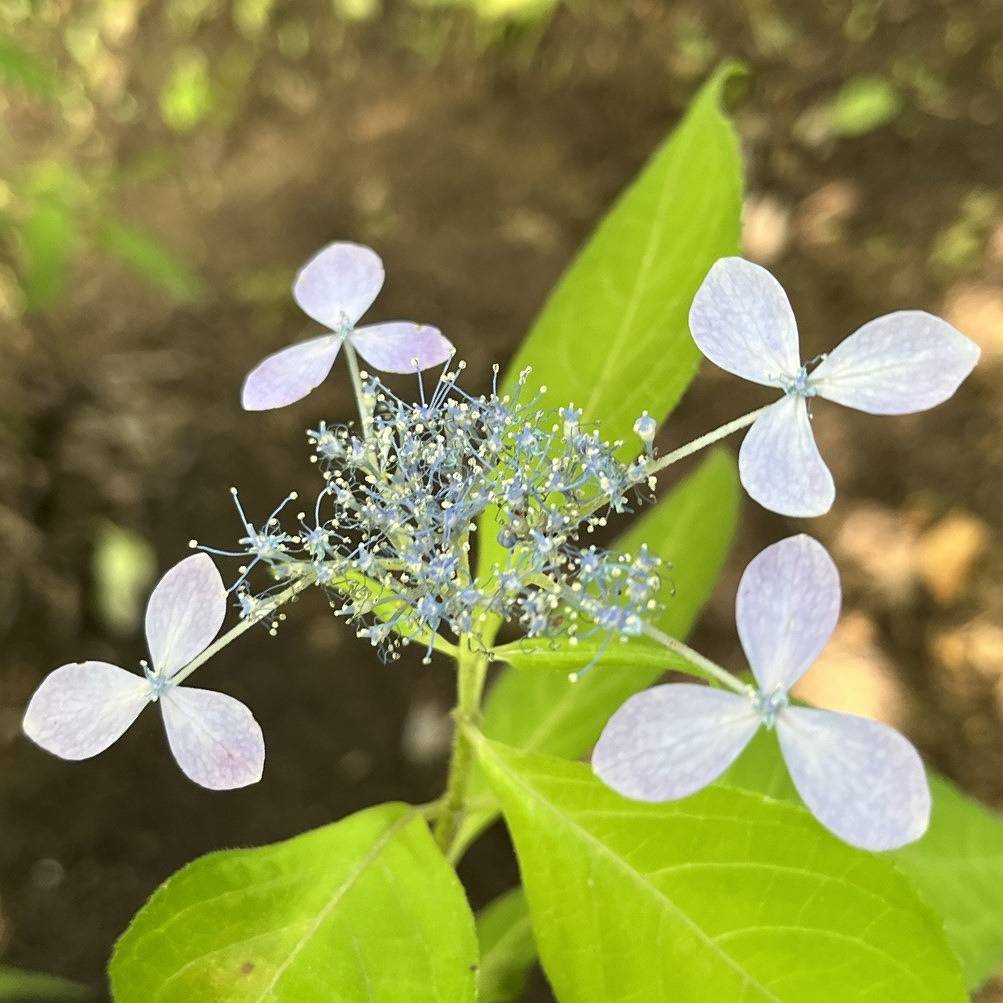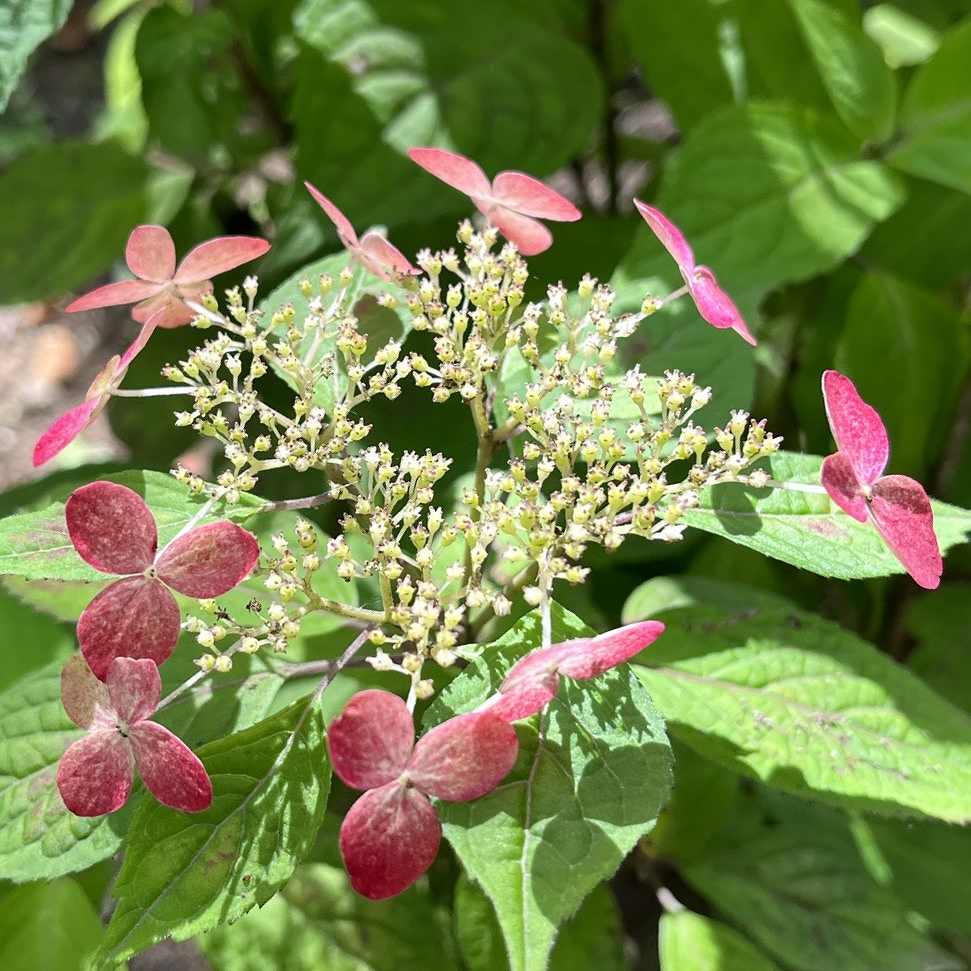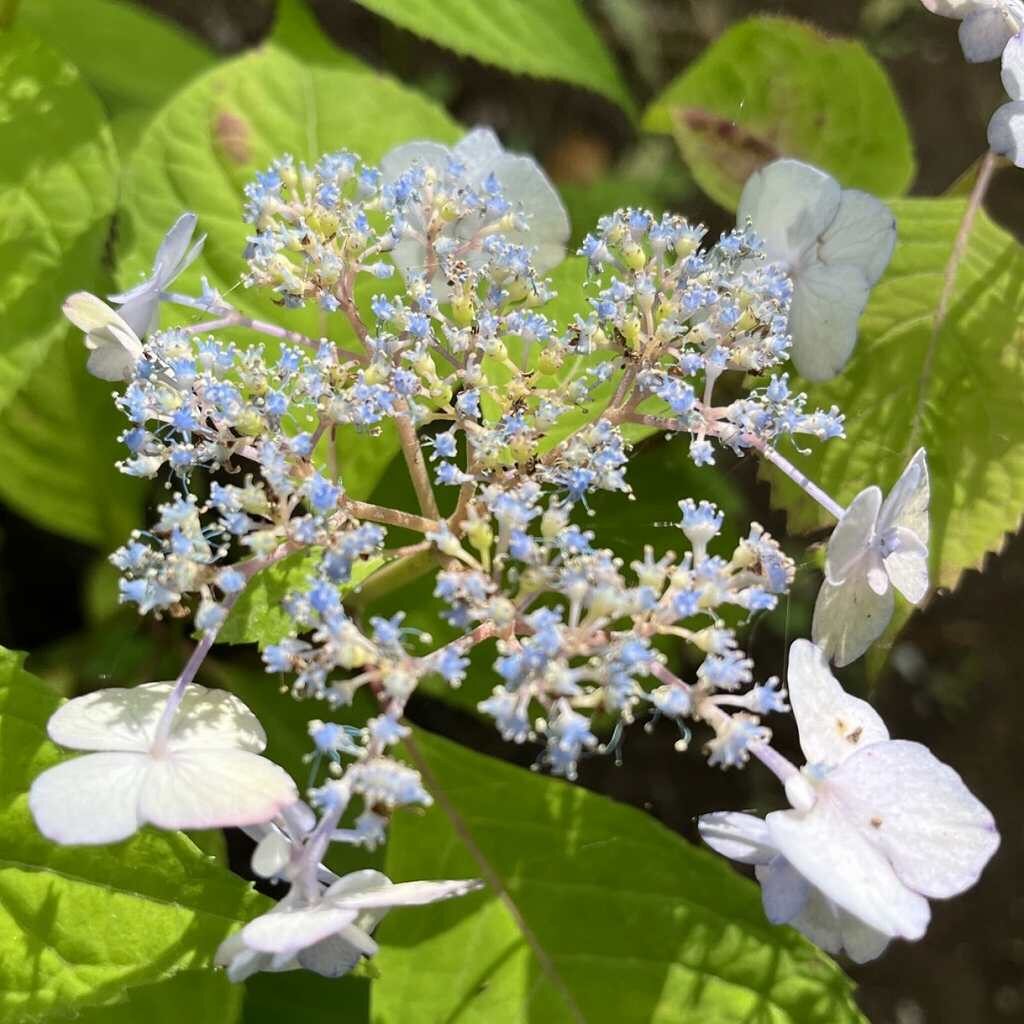ヤマアジサイは山地の谷沿いで湿り気のあるところに自生しています。花が小さく、花色や花形も様々。葉も小さく薄くスラリとしています。
Mountain hydrangea grows naturally in moist areas along mountain valleys. The flowers are small and have various colors and shapes. The leaves are small, thin and slender.
【仮名】ヤマアジサイ, サワアジサイ
【和名】山紫陽花, 沢紫陽花
【英名】Mountain Hydrangea, Tea-of-heaven
【学名】Hydrangea serrata
【誕生】07/ 14
【開花】05, 06, 07月
【花色】White, Pink, Red, Purple, Violet, Blue, Green






ヤマアジサイ
ヤマアジサイの自生
ヤマアジサイはアジサイ科の落葉低木。日本では本州の福島県から四国、九州までの太平洋側に、国外では千島列島から台湾、中国南部まで広域に分布しています。山地の谷沿いで湿り気のあるところに自生しているため、「沢紫陽花」という別名も。古くから庭園に植栽されました。
ヤマアジサイの近縁
ヤマアジサイは、花が額紫陽花より小さいので、「小額」という別名もあります。花色や花形も地域により様々。葉も本紫陽花より小さく薄く、スラリとしています。そのような違いはあるものの、生物学的には極々近縁。そのため、本紫陽花や額紫陽花の亜種とする分類もあります。
ヤマアジサイの品種
「紅額」は南日本の山地で自生し、江戸時代から栽培。装飾花が丸い菱形で、日光に当たると赤みを帯びます。葉は楕円形で厚く、秋に紅葉。「七段花」は装飾花が八重咲きです。江戸時代に絶滅した幻の紫陽花。その後、兵庫県や滋賀県で発見され、一般に出回るようになりました。
ヤマアジサイの変種
「天城甘茶」は天城山周辺ほか広く自生しています。花は白く、葉は細く、甘く苦い味。「韓国山紫陽花」は韓国で自生し、「海峡」「済州島」「明星」「流星」などの園芸種があります。「蝦夷紫陽花」は北海道と東北地方の日本海側に自生。装飾花と葉が大きく、果実が成ります。
Mountain Hydrangea
Wild mountain hydrangea
Mountain hydrangea is a deciduous shrub of Hydrangeaceae family. In Japan, it is distributed over a wide area from Fukushima prefecture in Honshu to Shikoku and Kyushu on the Pacific Ocean side, and overseas from the Chishima archipelago to Taiwan and southern China. It grows naturally in moist places along the valleys of the mountains, so it is also known as “Stream Hydrangea”. It has been planted in the garden since ancient times.
Close relatives of mountain hydrangea
Mountain hydrangea is also known as “small lacecap” because its flowers are smaller than the lacecap hydrangea. Flower color and shape also vary from region to region. The leaves are smaller, thinner and more slender than the hydrangea. Despite such differences, they are biologically closely related. Therefore, there is also a classification that is a subspecies of the hydrangea and lacecap hydrangea.
Mountain hydrangea varieties
“Red lacecap” grows naturally in the mountains of southern Japan and has been cultivated since the Edo period. The decorative flowers are round diamonds and become reddish when exposed to sunlight. The leaves are oval and thick, and turn red in autumn. “Seven-tiered flowers” are double-flowered decorative flowers. A phantom hydrangea that was extinct during the Edo period. After that, it was discovered in Hyogo and Shiga prefectures and became popular.
Variant of mountain hydrangea
“Amagi sweet tea” grows naturally around Mt. Amagi and elsewhere. The flowers are white, the leaves are thin, and the taste is sweet and bitter. “Korean mountain hydrangea” grows naturally in Korea, and there are gardening species such as “Strait”, “Jezhou Island”, “morning star”, and “meteor”. “Ezo Hydrangea” grows naturally on the Sea of Japan side of Hokkaido and the Tohoku region. Decorative flowers and leaves are large and bear fruit.


